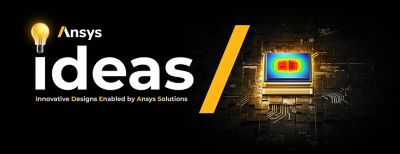-
United States -
United Kingdom -
India -
France -
Deutschland -
Italia -
日本 -
대한민국 -
中国 -
台灣
-
Ansys는 학생들에게 시뮬레이션 엔지니어링 소프트웨어를 무료로 제공함으로써 오늘날의 학생들의 성장을 지속적으로 지원하고 있습니다.
-
Ansys는 학생들에게 시뮬레이션 엔지니어링 소프트웨어를 무료로 제공함으로써 오늘날의 학생들의 성장을 지속적으로 지원하고 있습니다.
-
Ansys는 학생들에게 시뮬레이션 엔지니어링 소프트웨어를 무료로 제공함으로써 오늘날의 학생들의 성장을 지속적으로 지원하고 있습니다.
ANSYS BLOG
August 10, 2021
Join us at IDEAS Digital Forum to Explore the Future of Electronic Design
Multiphysics – the simultaneous analysis of multiple physical effects – is at the heart of a profound and challenging inflection in electronic design. The increase in speed and integration density of today’s designs blur the lines between chip design and system design, and is epitomized by 3D integrated circuits (IC). Multiphysics is driving a step-function in the technical expertise required by electronic design teams by merging previously distinct disciplines while adding novel physics into the equation.
The Multiphysics Revolution Heats Up
A concrete example of how the facts on the ground are rapidly evolving include the increasing focus on thermal analysis as it becomes apparent that heat dissipation is probably the limiting factor in 3D IC integration density. But thermal gradients across heterogeneous components inevitably leads to differential expansion, which results in mechanical stress and warpage of a package.
Warping impacts the system reliability directly, but temperature also has less direct design effects. For example, it determines the maximum current in wires to avoid electromigration reliability issues. The higher speeds of signals coupled with larger physical sizes of multi-die systems make electromagnetic simulation a must – for not just the radio frequency (RF) designers, but also for high-performance computing (HPC) and artificial intelligence/machine learning (AI/ML) hardware. Inter-related physical effects such as these are driving the multiphysics revolution.
Semiconductor Certification Requires Better Integration
The semiconductor foundries have responded to the rise in 3D IC design starts by supplementing their sign-off requirements and their recommended IC design flows to include the thermal, electromagnetic and other tools that were previously relegated to outsourced assembly and test providers (OSATs) or other outside vendors, following fabrication. Most of the advanced 3D systems that have been brought to market so far were designed by large, leading semiconductor companies that have the resources and expertise to take advantage of the new technical opportunities. But, in order to make 3D IC design more accessible to mainstream design teams, the industry needs tools and design platforms that capture and automate these advanced multiphysics design requirements.
The old ways of working won’t cut it in this new reality. Design specialists with specific domain knowledge dispersed over multiple groups need to be brought together into vertically integrated design teams that make expertise available right from the get-go during system prototyping. Designers will need new tools, new training and new methodologies to compete in this environment. That’s why we invite you to attend this year’s Ansys IDEAS Digital Forum: Innovative Designs Enabled by Ansys Solutions.
IDEAS is a digital event that takes place Sept. 22-23, 2021. It gathers together dozens of the leading electronic design companies from across the world where you’ll access C-level executive keynote speeches as well as advanced tips and techniques from leading-edge design teams. Experience an unparalleled breadth and scope of multiphysics tools, solutions and practical implementations. Ansys is uniquely positioned to bring you system analysis, semiconductor signoff, photonics expertise and mission workflow solutions. With roundtable panels and executives from the design community and solution providers, you can get a quick and accurate impression of the state of the art in electronic design today – all from the comfort of your home office.
Registration for IDEAS is now open to all at ansys.com/ideas. Sign up and reserve your front seat for a showcase of the future of electronic design.











